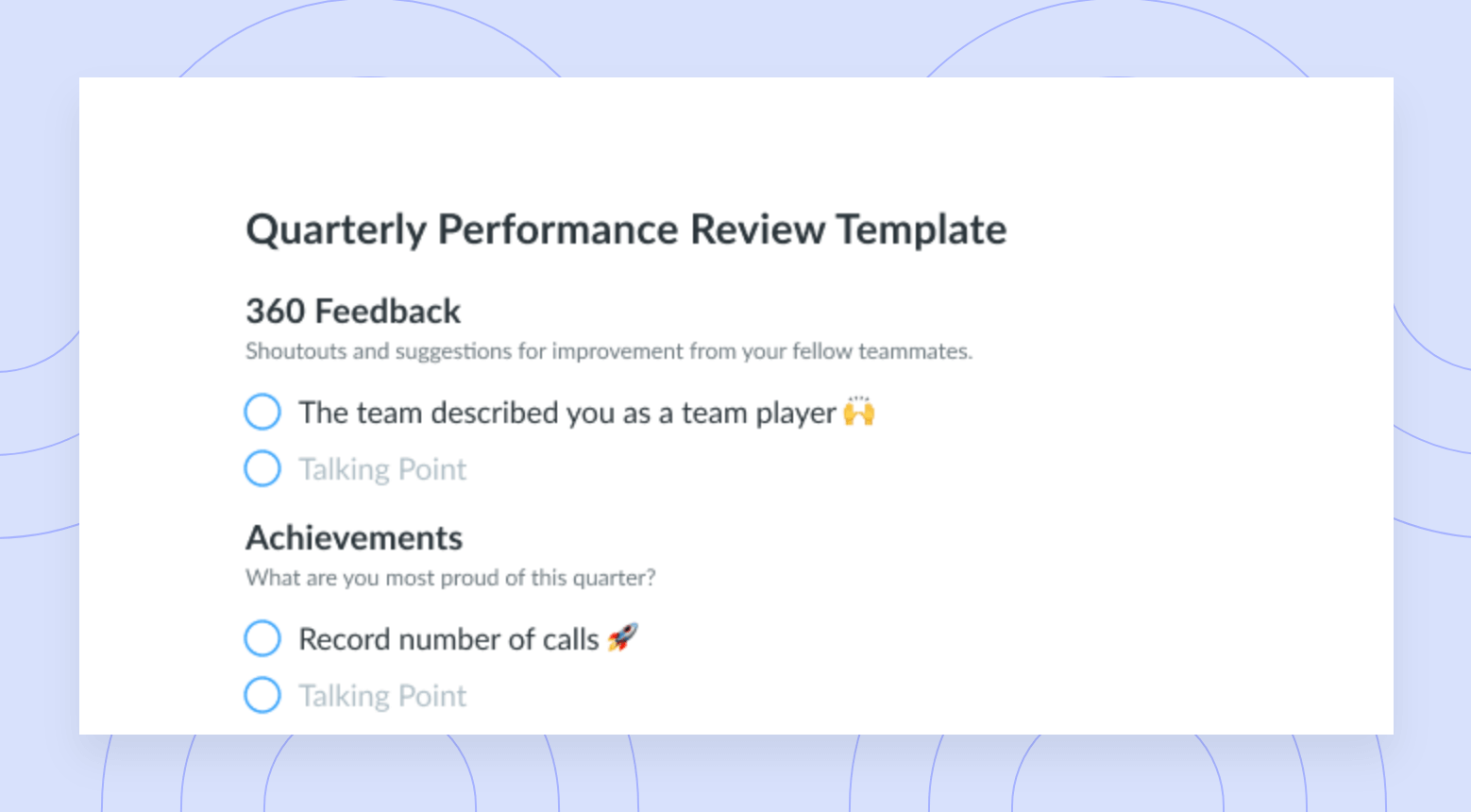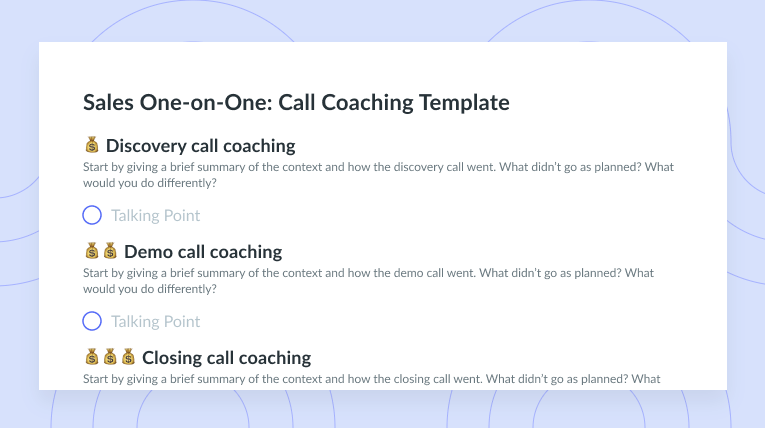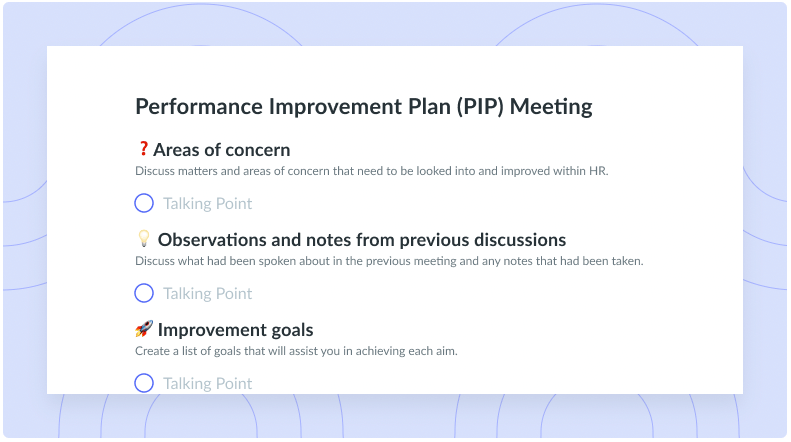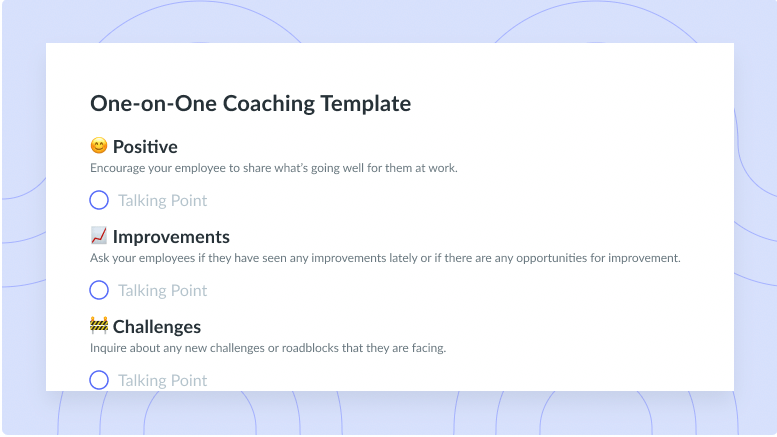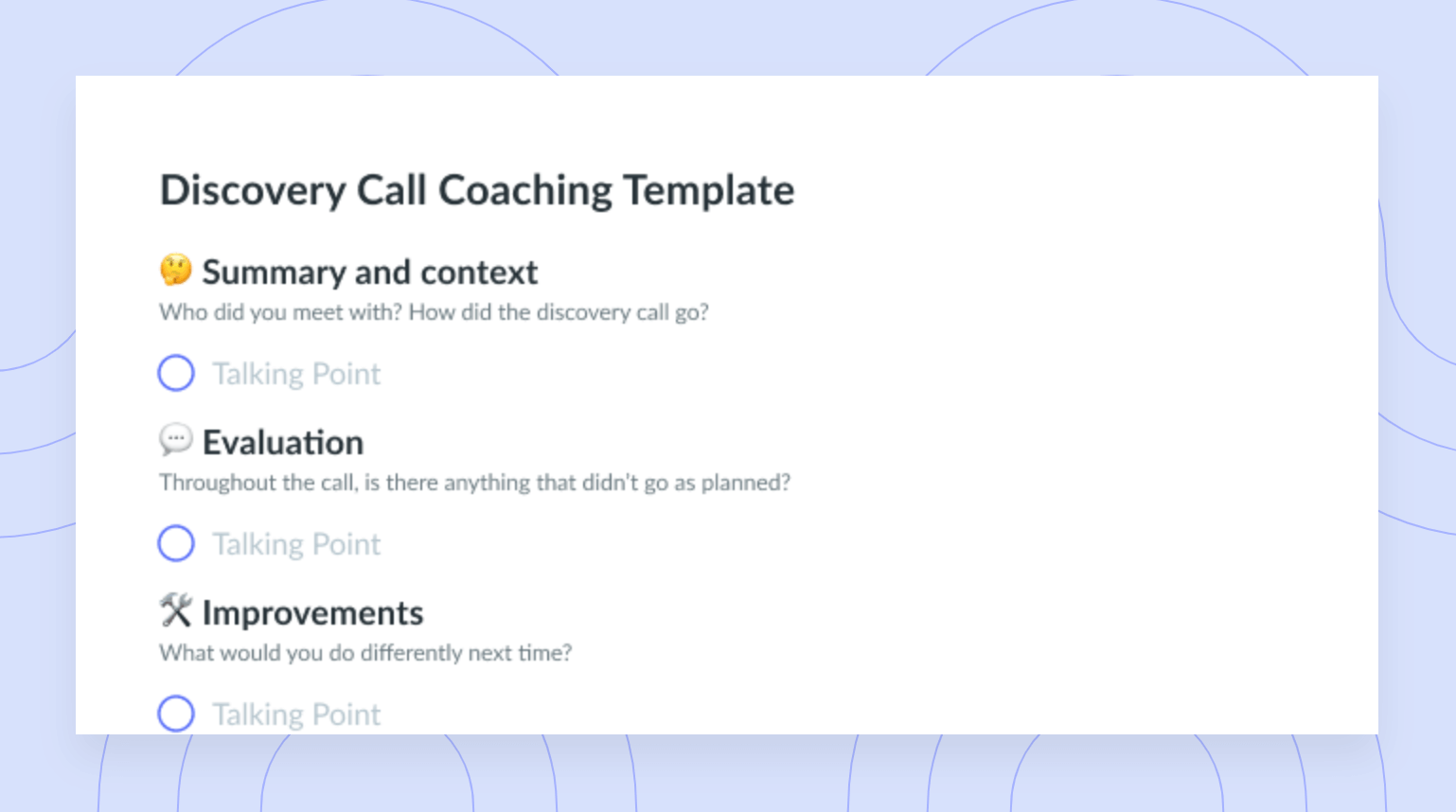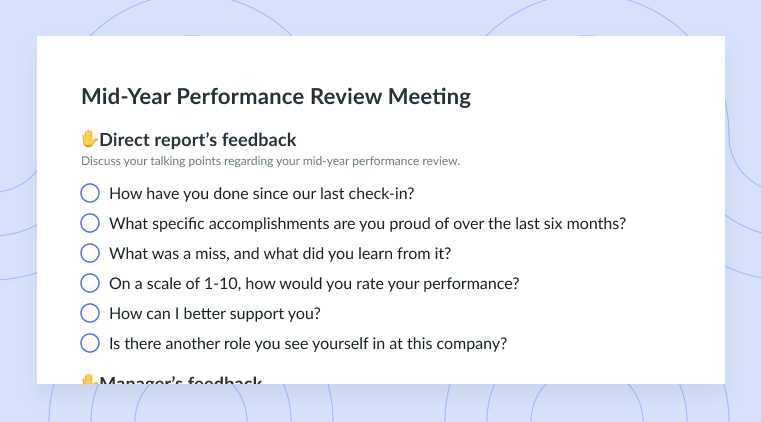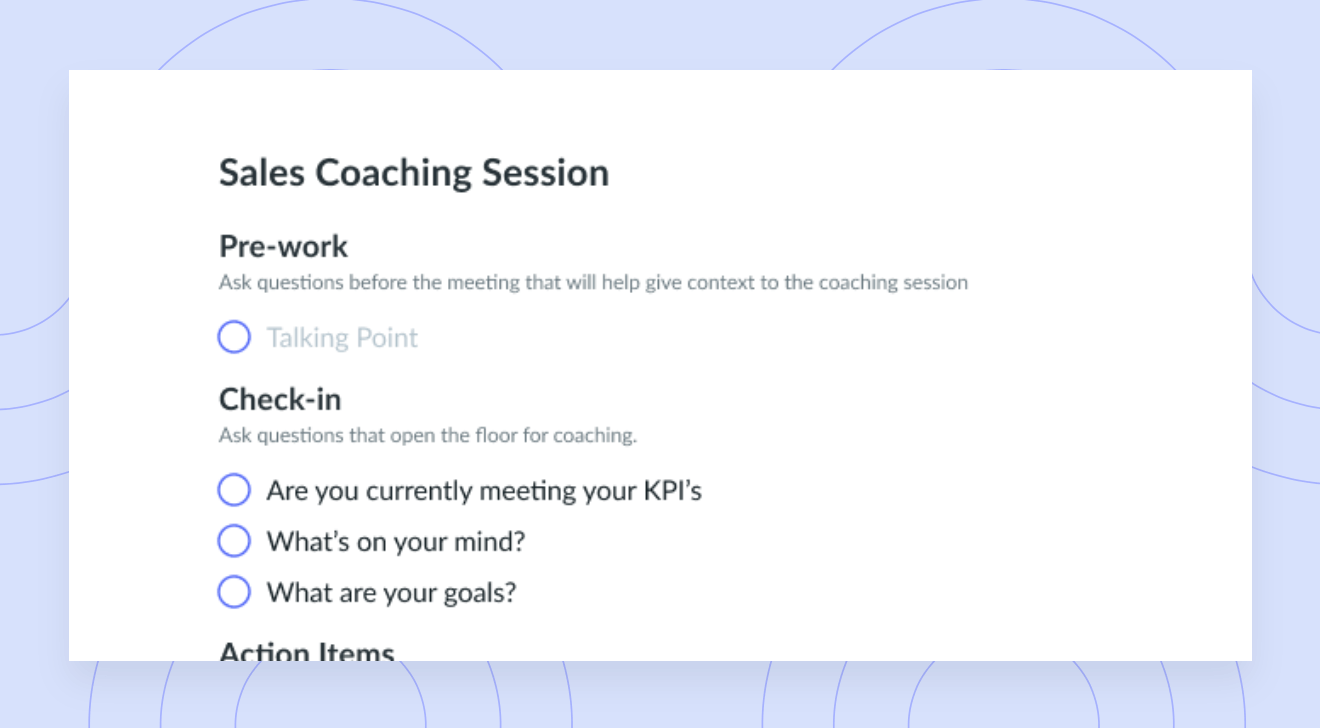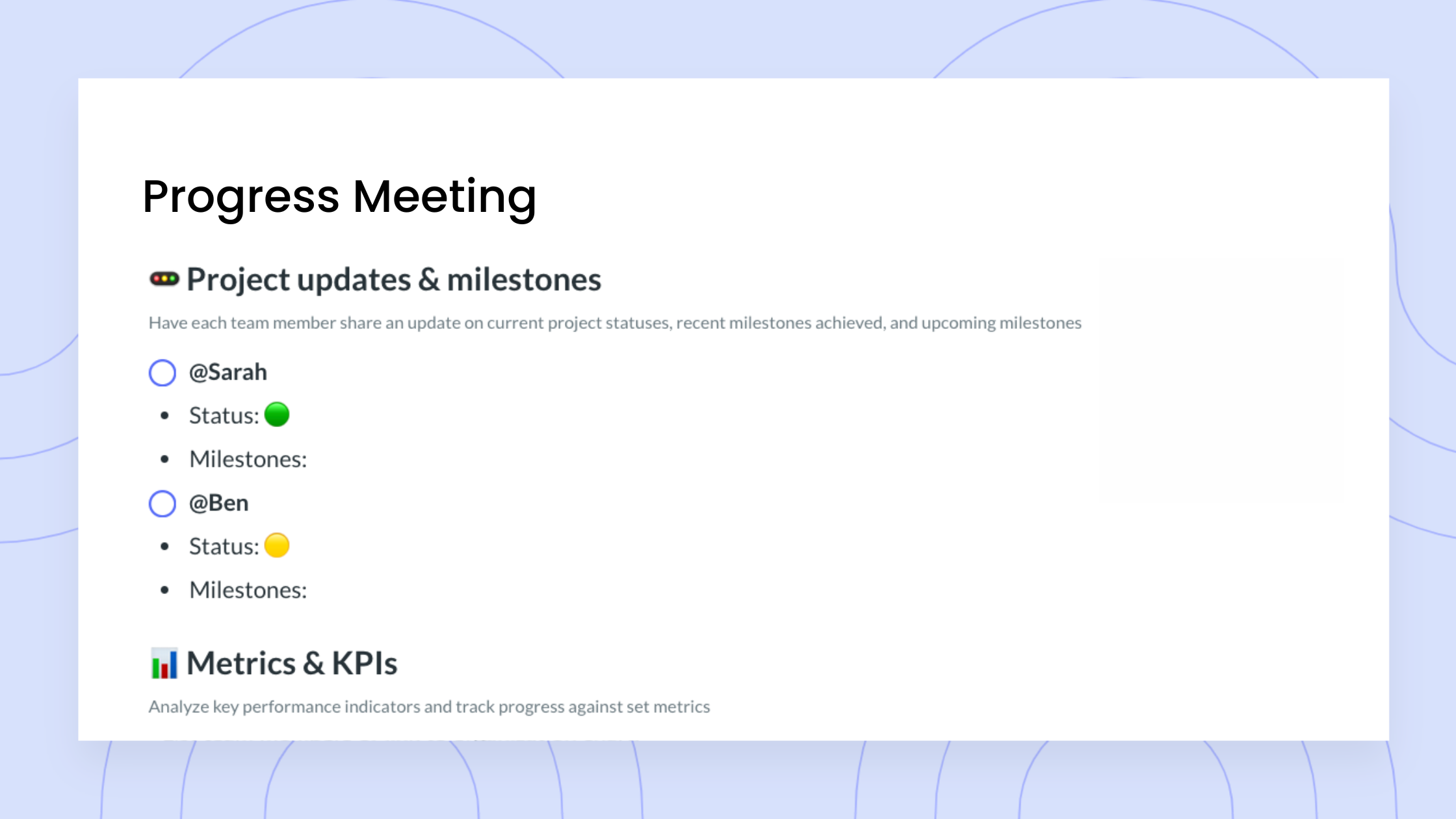Performance Coaching in Professional Development
Learn everything to know about employee performance coaching and how it can help you support a more engaged and more productive workforce.
Employee performance coaching is a resource that promotes performance improvement, as well as learning and development. Effective coaches are known to help team members hit their performance goals through personalized performance coaching and to ultimately help each individual reach their full potential at work. Many high-performance employees and leaders attribute at least some of their success to a good coach or to a great coaching program. There are so many benefits of performance coaching, including more engaged employees who feel increasingly motivated and satisfied with their work. As such, this article will cover everything you need to know about employee performance coaching and how to build a coaching culture to drive performance and improvement and reach performance goals with more ease.
- What is employee performance coaching?
- What is a performance coaching plan (PCP)?
- 10 tips for effective employee performance coaching
What is employee performance coaching?
Employee performance coaching aims to improve an employee’s performance in specific areas of their job. Through ongoing feedback and collaboration, an employee and their coach focus on maximizing the employee’s potential by working on areas of their position and performance that need the most support and improvement. This performance coaching serves as a method of continuous performance management where together, the coach and employee set goals and track the progress that is being made to achieve them. The overarching goal of employee performance coaching is to help employees achieve their performance objectives that they may not have been able to meet in the previous review cycle.
What is a performance coaching plan (PCP)?
A performance coaching plan (PCP) is a formal document that can be in written form or electronically organized, and that is assigned to any employees who haven’t been able to meet their performance requirements or objectives. A PCP is for individuals who require improvement in their positions, and the plan will then outline which specific responsibilities and criteria need to be met by the individual to meet each objective that wasn’t adequately reached. The PCP is a way to formally track and support employees’ improvements in their performance and to flag any necessary actions to be taken by human resources.

Run efficient meetings, come to a decision, and get back to work
Level up your meeting habits to boost engagement and productivity with a collaborative meeting agenda. Try a tool like Fellow!

10 tips for effective employee performance coaching
- Provide regular feedback
- Recognize employees regularly
- Tolerate and support failure
- Encourage positive work relationships
- Set clear goals and expectations
- Offer your support
- Conduct 360 feedback
- Ask employees for opinions
- Create a culture of continuous improvement
- Host regular check-in meetings
1Provide regular feedback
Any good coach knows that it is essential to provide regular feedback to the employees they’re working with. The only way that an employee can make improvements to specific areas of their role is if they know where they may need some extra focus, through constructive feedback. With Fellow, you can use the feedback function to not only provide feedback on employee performances but also to track it over time to see what kinds of improvements are being made. This visual representation of performance over time will help both the coach and the employee to adjust the coaching strategy as required.

2Recognize employees regularly
Recognition is central to high performance employees. A company culture that regularly recognizes its employees will have more engaged employees who know that their contributions are seen and appreciated. This further motivates people to continue working at a high standard and therefore to meet their performance goals. Recognition needs to be central to the coaching process so that you’re building relationships that are founded upon respect and encouraging employees to continuously improve.
3Tolerate and support failure
Failure is necessary in any job. Without failures, many of us wouldn’t be exposed to the valuable learning lessons and experiences that are required to progress in a given career path. Effective coaches tolerate and support failures because they recognize that failure is a necessary part of learning and development. A good coach will not only tolerate failure, but will also support employees by telling stories of their own challenges and pitfalls that have brought them to where they are now. We are all human, and there needs to be room for employees to make mistakes and experience failure to overcome difficult situations and to come out of them stronger and more prepared than before.
4Encourage positive work relationships
Positive work relationships are important for everyone, but especially for employees who may be struggling to meet their performance targets. Encourage positive work relationships through the promotion of collaborating on tasks, brainstorming when challenges arise, and planning sessions to discuss innovative ideas and creative solutions. Especially during tough times at work, it is often our colleagues who bring a bit of ease to the challenges that we face through their suggestions, input, or emotional support.
5Set clear goals and expectations
As you begin to coach employees, make sure that you set clear goals and expectations. Without clearly defined goals and expectations, employees may feel confused as to what they need to do to improve their performance, and this confusion will hinder their ability to progress in their roles and meet their performance goals. With Fellow, you can easily set clear goals and expectations with employees through the objectives and key results (OKRs) tool. Through the OKRs tool, you can stay on top of your employees’ performance goals by recording, defining, and tracking the progress of their OKRs. You can also review the objectives that have been set when you meet employees for their coaching sessions!
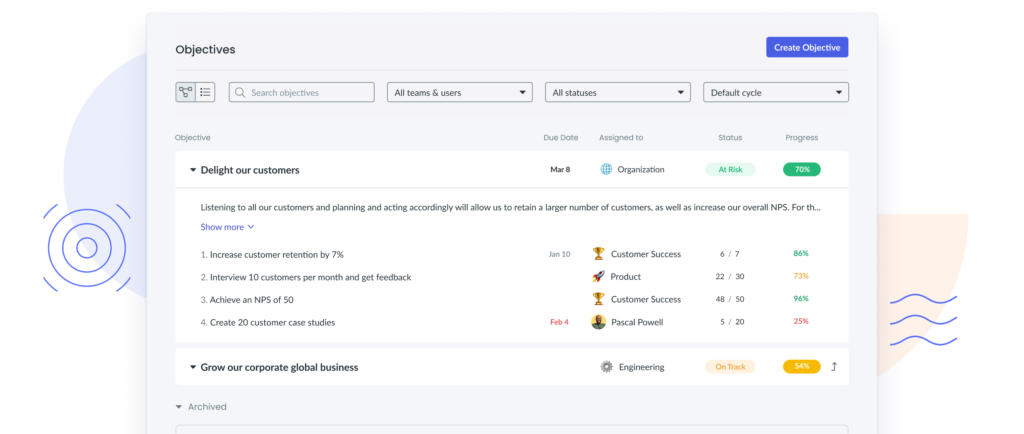
6Offer your support
A principal function of a good coach is to offer support to employees—especially to employees who are struggling to hit their performance development metrics. Often, this struggle will affect an employee’s confidence and they may feel embarrassed or discouraged. Part of your role as a coach is to encourage employees, reassure them that you have confidence in them and in their abilities, and provide them with emotional support and guidance. This is a relationship that requires trust, and the more an employee trusts their coach, the more honest insights can be used to help the employee improve in their role and reach their full potential.
7Conduct 360 feedback
Conducting 360 feedback reviews is a great way of collecting feedback that is free of bias and that gives a clear picture of an employee’s strengths, weaknesses, and areas of opportunity. Using a tool like Fellow can help you gather this 360 feedback more effectively, as it supports you in coordinating from whom to gather feedback about a given employee, and by which date and time. It also helps you review all of the feedback collected for an employee in an organized, comprehensive way to give you a clear view of how an employee is tracking towards their performance goals and performance improvement targets.
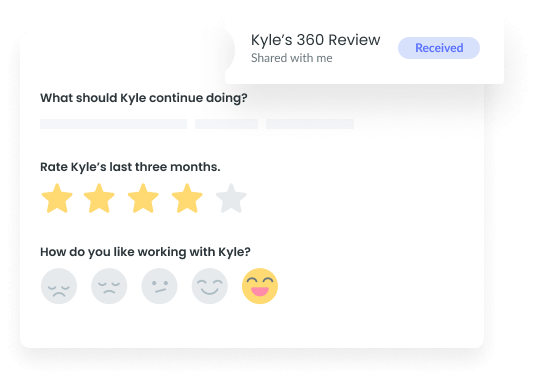
8Ask employees for opinions
You can easily empower your employees by asking them about their opinions. Whether this is during allocated time at the end of each team meeting, during one-on-one meetings, in an anonymous feedback contribution, or in casual conversations, you need to truly listen to the opinions and suggestions from your team members. Not only will this provide you with valuable insights that may not have come up otherwise, but it also shows your employees that you care about what they think and are ready to consider their opinions. This builds your team members’ confidence and shows them that they are recognized and appreciated.
9Create a culture of continuous improvement
Creating a culture of continuous improvement is another great way to establish effective employee performance coaching. Normalizing employee performance coaching in general is extremely important, and employees need to know that the expectation is for them to continuously be learning and growing, even if they’re hitting their performance goals. Build a coaching culture that is focused on continuous improvement and be sure that the management team is leading by example to really push this performance management principle.
10Host regular check-in meetings
Hosting regular check-in meetings is an effective means to monitor the performances of your team members. This is a great way of looking into employees’ progress in a less formal meeting, where you may focus on one or two points, rather than going through their performance as a whole. A quick check-in meeting can give a coach the information they need to know from employees regarding their priorities, what they’re working on, and what they may be struggling with so the coach can help them realign and guide them through their week. Try using Fellow’s effective quick check-in meeting template to easily monitor employees’ performances on a weekly or bi-weekly basis.
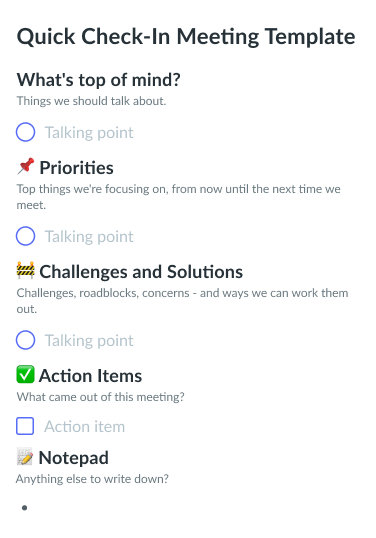
Parting advice
Employee performance coaching is a great way to support individuals who may not quite be reaching their performance goals and who require more learning and development. A coaching program will promote more engaged employees who feel supported as they face challenges that they would like to overcome and as they work on their professional development. Consider these 10 tips for effective employee performance coaching so you can give employees the guidance they deserve to empower them to feel more confident and to ultimately be more effective at work.
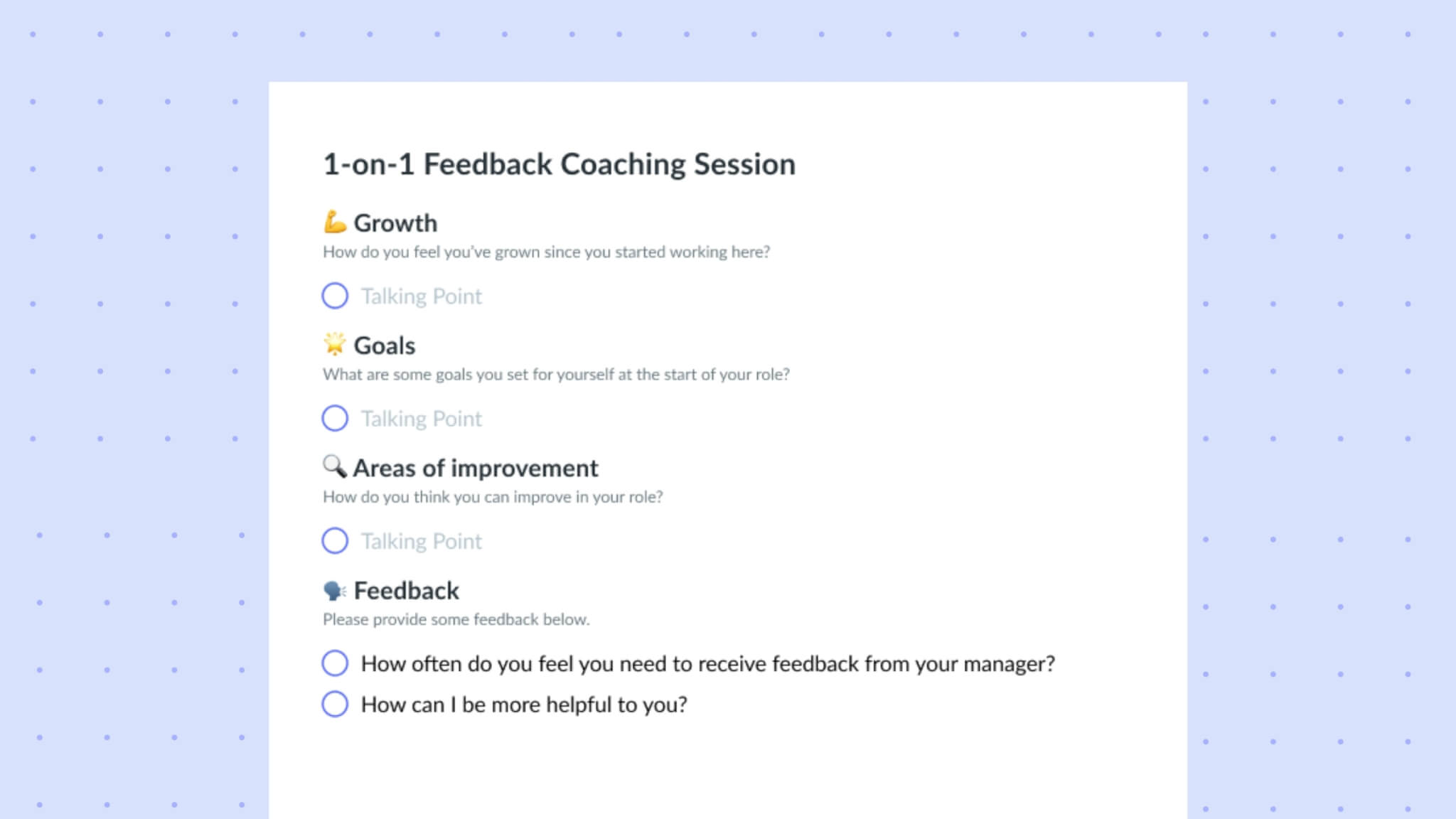
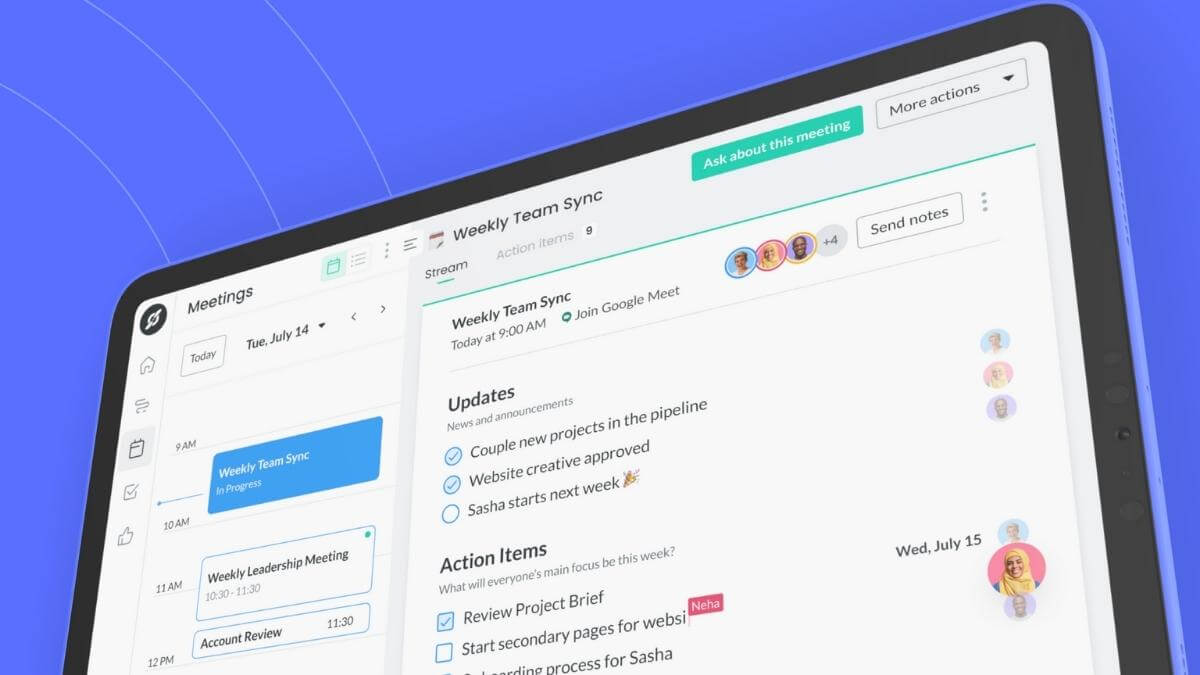

![Effective Performance Improvement Plan [+ Free Template]](https://fellow.app/wp-content/uploads/2023/04/Performance-Improvement-Plan3.jpg)


![10 Tips for Managing Freelancers [+ Free Templates]](https://fellow.app/wp-content/uploads/2022/06/Managing-Freelancer.jpg)
![10 Effective Strategies to Improve Employee Performance [+ Free Template]](https://fellow.app/wp-content/uploads/2020/07/Improving-employees-performance.png)

